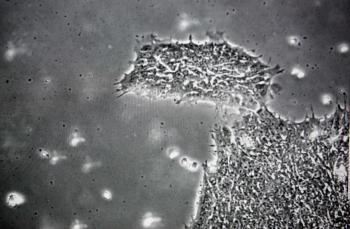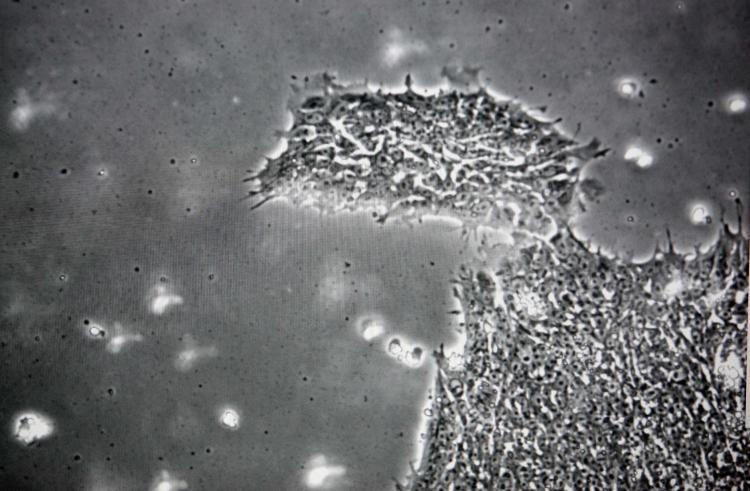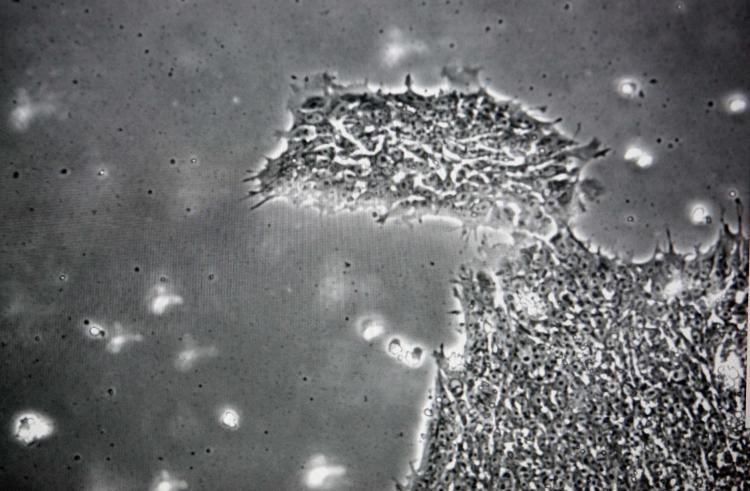Fortune Magazine hailed federal judge Royce C. Lamberth’s halt to federal funding of embryonic stem cell research as “great for California.” Reporter Shelly DuBois said his ruling would make the state a “mecca for scientists investigating stem cells.”
Yet the leaders of California’s stem cell agency CIRM deplored the decision. “This decision will disrupt the advances that are happening across the country to bring hESC-based therapies to patients in need.
“Under this decision, even research using the hESC lines approved by President George W. Bush will be halted,” said CIRM in a statement. HESC stands for human embryonic stem cells.
California voters chose to dedicate stable funding for stem cell research in November 2004, when they passed the California Stem Cell Research and Cures Act, also known as Proposition 71. The act established CIRM, a state agency for stem cell research, funded by dedicated bond sales.
Proponents argue that stem cell research may lead to cures for currently incurable conditions including Parkinson’s disease, ALS, Alzheimer’s disease, and paralyzing spinal cord injuries. It is deemed possible pluripotent stem cells may be able to grow organs, removing the need for organ transplants from donors. These cells would not come from embryos but, for now, more research on embryonic cells is needed to learn how to work with the other kinds of stem cells, according to CIRM.
“It would be immoral to unnecessarily delay the critical medical research that is vital for human embryonic stem cell therapies to reach patients suffering from chronic disease and injury,” said Robert Klein, chairman of the CIRM governing board in the statement.
“We must remember that the microscopic cells used for this research would otherwise be thrown away by in vitro fertilization clinics, by couples that had finished their family planning,” he said.
Actor Christopher Reeve advocated stem cell research after he was paralyzed from the neck down in a horseriding accident. Another supporter is actor Michael J. Fox who is battling Parkinson’s disease. Nancy Reagan, wife of former President Ronald Reagan who died of Alzheimer’s’ disease, also supports stem cell research.
Governor Arnold Schwarzenegger said, “California is poised to lead not only this country, but all countries on stem cell research. We cannot fall behind the nations who are making this life-saving science a priority.”
{etRelate 41480, 13590}The argument against it is simple. Opponents consider the destruction of living human embryos a line medicine must not cross.
Yet the leaders of California’s stem cell agency CIRM deplored the decision. “This decision will disrupt the advances that are happening across the country to bring hESC-based therapies to patients in need.
“Under this decision, even research using the hESC lines approved by President George W. Bush will be halted,” said CIRM in a statement. HESC stands for human embryonic stem cells.
California voters chose to dedicate stable funding for stem cell research in November 2004, when they passed the California Stem Cell Research and Cures Act, also known as Proposition 71. The act established CIRM, a state agency for stem cell research, funded by dedicated bond sales.
Proponents argue that stem cell research may lead to cures for currently incurable conditions including Parkinson’s disease, ALS, Alzheimer’s disease, and paralyzing spinal cord injuries. It is deemed possible pluripotent stem cells may be able to grow organs, removing the need for organ transplants from donors. These cells would not come from embryos but, for now, more research on embryonic cells is needed to learn how to work with the other kinds of stem cells, according to CIRM.
“It would be immoral to unnecessarily delay the critical medical research that is vital for human embryonic stem cell therapies to reach patients suffering from chronic disease and injury,” said Robert Klein, chairman of the CIRM governing board in the statement.
“We must remember that the microscopic cells used for this research would otherwise be thrown away by in vitro fertilization clinics, by couples that had finished their family planning,” he said.
Actor Christopher Reeve advocated stem cell research after he was paralyzed from the neck down in a horseriding accident. Another supporter is actor Michael J. Fox who is battling Parkinson’s disease. Nancy Reagan, wife of former President Ronald Reagan who died of Alzheimer’s’ disease, also supports stem cell research.
Governor Arnold Schwarzenegger said, “California is poised to lead not only this country, but all countries on stem cell research. We cannot fall behind the nations who are making this life-saving science a priority.”
{etRelate 41480, 13590}The argument against it is simple. Opponents consider the destruction of living human embryos a line medicine must not cross.







